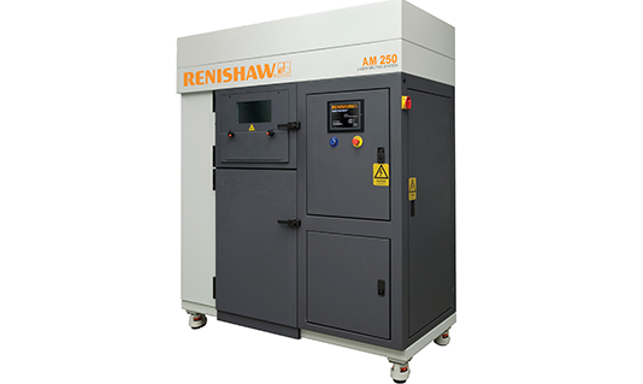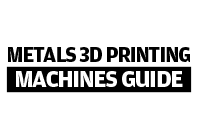
The basics
3D printing with metals has been around for a long time, starting with the sintering of metals back in the 90s. At that time, there was much talk about density, with many processes requiring secondary infiltration to achieve more solid parts.
That’s now changed as the industry has progressed and 99% dense parts have become the standard. Whatever machine and process variant you look at, the concept is the same: build up a part, layer by layer.
The process varies, however – it might be melting of powders with lasers or electrode beams or it might be the use of welding tips (usually called cladding). It’s only now that we’re starting to get a handle on how thermal activity during that build cycle affects the performance of the parts – and that’s when things start to get really interesting.
The options
This isn’t like running an FDM in your office. There’s serious capital expense to consider when looking at any of the metals printing machines. As a ballpark estimate, we’d say somewhere in the region of $150,000 upwards.
On top of that, you’ve got a whole host of ancillary equipment and facilities requirements. After all, anything involving powder materials is dangerous enough, but if you’re looking at some of the more exotic materials, safety requirements go through the roof (or you will).
That said, machine vendors are establishing process chains that can literally and figuratively keep a lid on things and get you up and running quickly.
Will the prices drop? We suspect not in the foreseeable future: these machines won’t be on the desktop any time soon.
The future
There’s a lot of activity in the metals 3D printing market at the moment.
From start-ups looking to ‘do a MakerBot’ with desktop metals production devices to the established players in the CNC market looking to combine their existing knowledge with some of the new technologies (or, in the case of laser cladding, with established technology) and grab a slice of the action.
The rise of industrial metal printing devices is inevitable. These companies have the scale, expertise and resources to do interesting things.
At the desktop level, however, we’re not entirely convinced. It’s one thing to build a small unit that can melt plastic on the desktop, it’s another thing entirely to build an office-based machine that can handle melting titanium powder at 1,600 degrees.
Six of the best

EOS EOSINT M 280
EOS’s M Sint machines have been on the market for over a decade now and the M SINT 280 is the company’s entry-level metals building machine.
With its 400 x 400 x 400mm build chamber, it combines larger capacity with a higher-speed 1 kW laser for building metal components from an ever-expanding set of materials. Together with EOS’ mastery of the complete process, including materials handling, recycling and postprocessing, this is the true state of the art.
Machine dimensions: 2,200 x 1,070 x 2,290 mm
Build envelope: 250 x 250 x 325mm
Spot size: Variable between 100 – 500 μm
Material options: Aluminium alloys, cobalt chrome, maraging steel, Inconel/nickel alloys, stainless steel, titanium
Web: eos.info

Concept Laser Mlab Cusing R
The Mlab Cusing R is the entry-level model of Concept Laser’s machines range. It has a small build platform that allows users to process a range of materials at high resolution, making it ideal for small components in the medical or jewellery industries (especially when combined with its support for precious metals).
The R variant can build titanium and titanium alloys. Build chambers of multiple sizes are available. The machine runs off single-phase power, has no extraction requirements and will fit through a standard door.
Machine dimensions: 705 x 1,833 x 1,220 mm
Build envelope: 50 x 50 x 80 mm / 70 x 70 x 80 mm /90 x 90 x 80 mm options available
Spot size: 25 µm
Material options: Various steels, titanium allows and various precious metals
Web: concept-laser.de

Arcam Q20
Arcam’s process focuses on the use of electron beams (rather than lasers) to fuse together each layer of material and its products have found homes in some of the world’s most advanced engineering organisations.
The Q20 is the state of the art model in the range, focusing on the aerospace industry and production, with a new closed-loop recycling station and quicker turnaround times, thanks to work done on build chamber thermal management.
Machine dimensions: 2,300 x 1,300 x 2,600 mm
Build envelope: Ø 350 x 380 mm
Spot size: 180 μm
Material options: Titanium and Titanium alloys, Stainless Steels (300 series), Inconel, Tantalum, Tungsten, Niobium and other ‘weldable’ materials
Web: arcam.com

Renishaw AM 250
Renishaw is a well-known name in the world of manufacturing. Its AM125 and AM250 machines are recent entrants into the metals printing world and offer two usable build envelopes in single, integrated units.
This means that no additional stations are required for material recycling (unused powder is automatically reintroduced into the system while it’s running). The option to extend the build envelope from 300mm to 360mm is there for those with larger component requirements.
Machine dimensions: 1,700 x 800 x 2,025 mm
Build envelope: 250 mm × 250 mm build area, up to 365 mm
Spot size: 70 μm
Material options: Titanium alloy (Ti-6Al-4) nickel alloys/Iconel, aluminium, cobalt chrome, stainless steel, dental and medical-grade colbalt chromes and medical titaniums
Web: renishaw.com

Sciaky EBAM 300 Series
Sciaky is a company known for its master of automated welding at very large scales — so it was perhaps inevitable that it would get into the additive manufacturing world as well.
Combining its knowledge of numerically controlled electrode-beam welding and some witchcraft, its range can be fitted out to build parts directly at massive scale (we’re talking up to 6 metres in length). It can also process generally available materials, so you’re not stuck with a single vendor.
Machine dimensions: 7,620 x 2,743 x 3,353 mm
Build envelope: 7,112 x 1219 x 1219 mm
Spot size: Not available (minimum feature size ~1mm)
Material options: Stainless steels, tooling steels, non-ferrous alloys, super alloys, precious metals, alumina
Web: sciaky.com

Mazak INTEGREX i-400AM
It seems that the CNC machinery vendors are getting heavily into the additive world. After all, if you’ve already mastered the art of milling and turning, then adding a method of directly despositing material makes perfect sense.
One of the latest to get on board is industry legend, Mazak, which has integrated a laser-cladded apparatus into its Integrex i-400 mill turn machine. Few details are available yet, but this looks to be a trend for the coming years.
Machine dimensions: TBC
Build envelope: TBC
Spot size: TBC
Material options: If you can machine it and weld it, we’re guessing this will handle it
Web: mazak.com
Design & manufacturing of complex hubs with Kappius
Russ Kappius, a mountainbike enthusiast, winner of six Masters racing titles, and a research geophysicist and software developer, is the brains behind this design for a novel oversized hub and high-performance drive assembly that transfers more power from pedal to chain to wheel.

Kappius and his son Brady – an engineer and pro mountain-bike rider – first tried technologies like waterjet cutting and wire electrical discharge machining (WEDM) to tweak the design of their hubs step by step. But either way, the process had limitations, both in terms of accuracy and long turnaround times.
They then discovered Direct Metal Laser Sintering (DMLS). This additive manufacturing technology met their rapid turnaround needs and enabled them to produce parts to exacting specifications and with additional design complexity.
For two years, Russ and Brady Kappius field-tested additive manufactured versions of their hub and tweaked its design.
In the first week of field testing, the elder Kappius won a race using the latest iteration of the hub assembly.
“We went from concept to bikeready components in about a month,” enthuses the sportsman. “I’ve never been able to move that quickly before.“
A typical order of ten drivetrain assemblies requires two builds on an EOSINT M 270. With the help of software, the components can be arranged on the machine’s build platform to maximise output.
kappiuscomponents.com
Optomec pursues metals & electronics
A new high-volume process is available that lowers manufacturing costs for the antennas used in mobile devices.
The new process works with standard injection-molded plastics – no special additives or coatings are required.

Based on Aerosol Jet technology, the digital process prints conformal antennas using conductive nanoparticle silver inks.
The printing process accurately controls the location, geometry and thickness of the deposit, in order to produce a smooth, mirror-like surface finish that ensures optimum antenna performance.
The good news is that no plating or environmentally harmful materials are used in the process.
Developed by Optomec, a company that has already established a name for itself as a serious player in the 3D printing of metals with its LENS technology, this new approach to building conductive components directly looks intriguing.
A look at the technologies 3D printing in metal
Default







